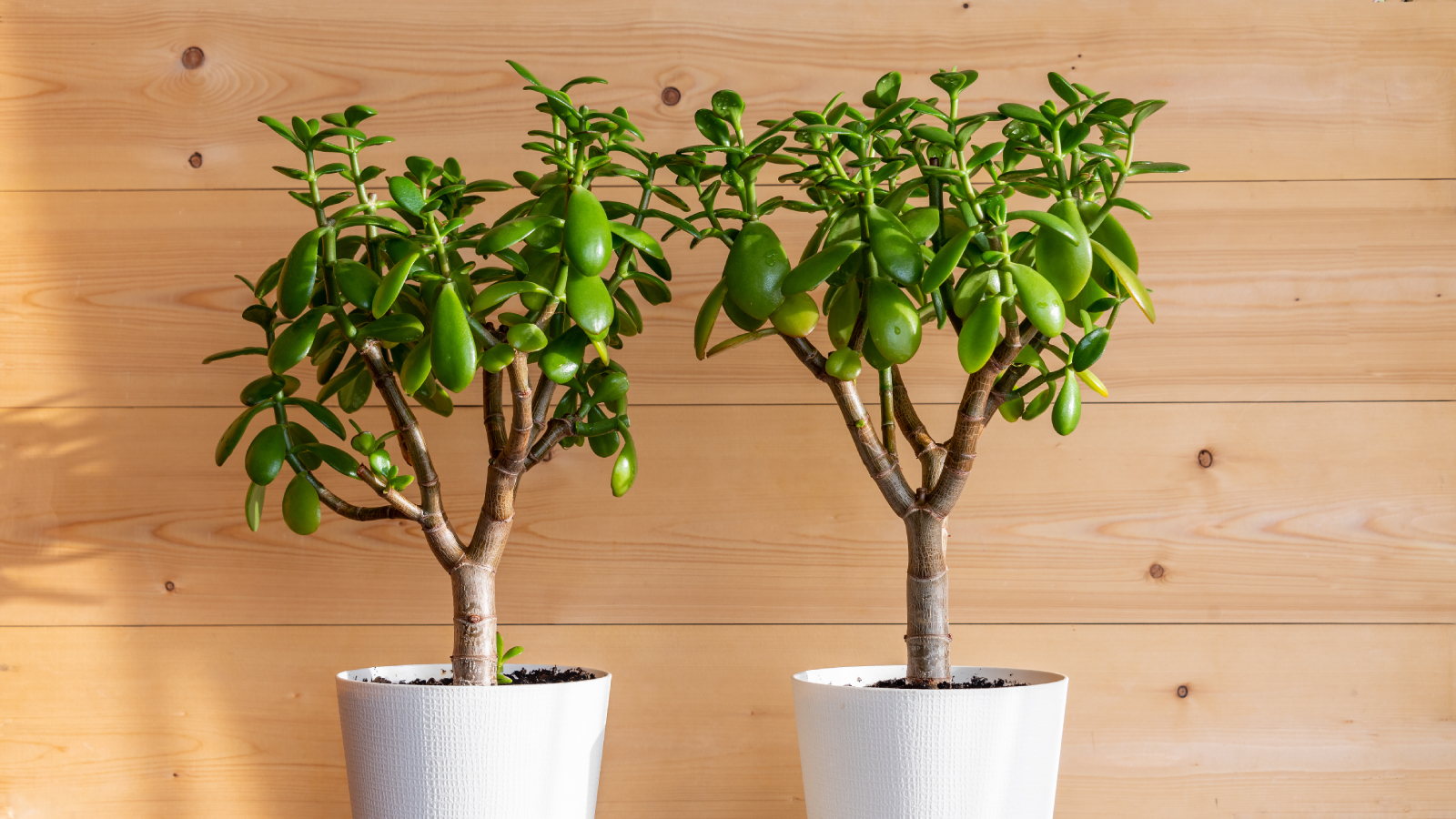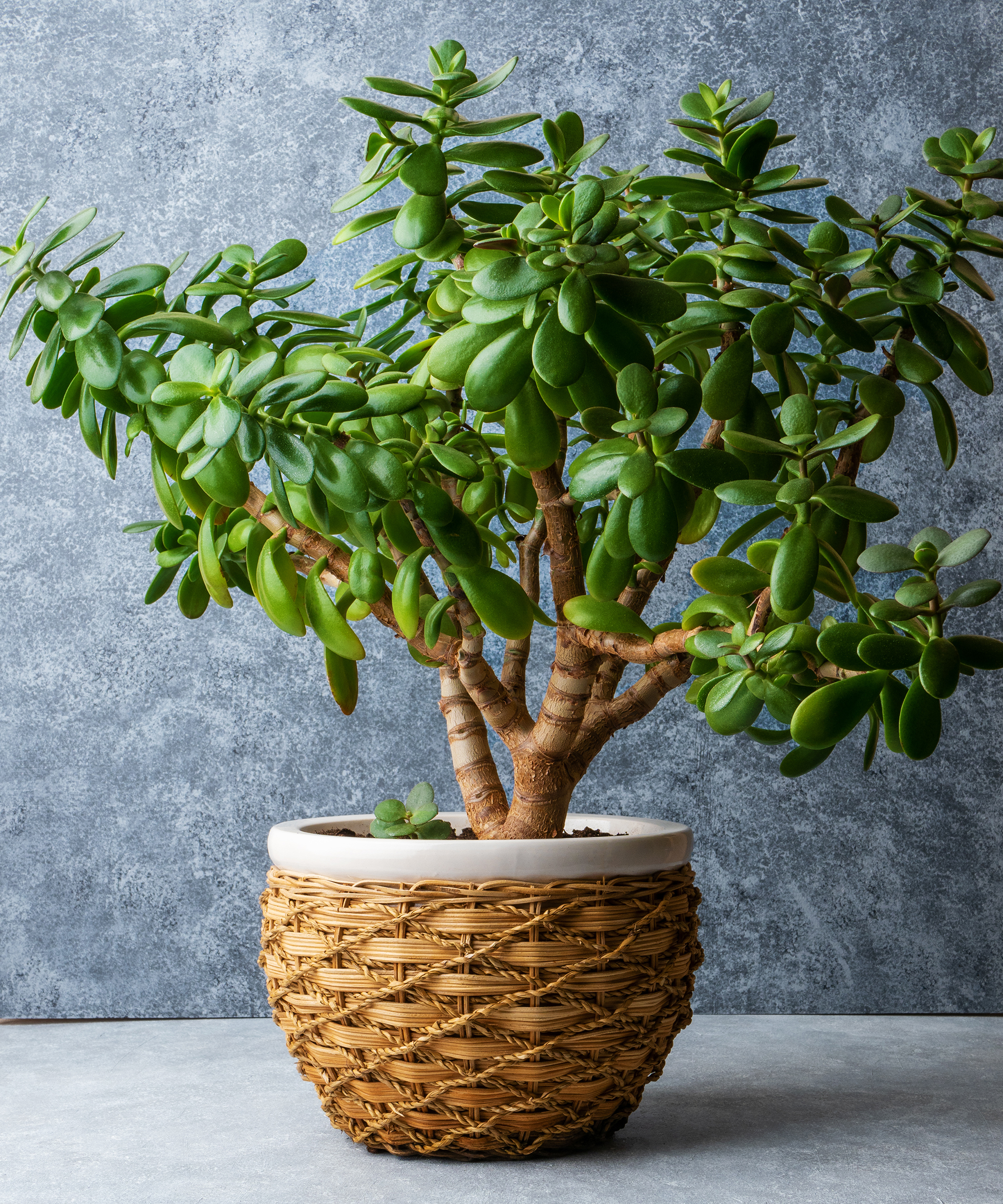Growing Jade Houseplants - Tips For The Care And Maintenance Of Jade Plants
Jade plant care only takes only a little TLC for a beautiful houseplant that will last for years to come. Learn all about the care and maintenance of jade plants.


Quick Facts:
Botanical name: Crassula ovata
Height: 5 feet (1.5 m)
Spread: 2-3 feet (61-91 cm)
Sun exposure: Indirect sun outside to full sun indoors
Soil requirements: Well-draining, acidic succulent soil
Hardiness zones: USDA 10-12
When to plant: Spring
A favorite houseplant often used as a bonsai, jade has been a must-have plant for decades. Under the right conditions, this emerald green succulent can be expected to live up to 50, even 100 years!
To keep your jade plant in the running for the longest living, you need to know how to take care of it. Don’t worry, we’ve got you covered. Read on to learn all about how to care for a jade plant indoors.
Indoor Jade Plant Care
Learning about the care and maintenance of jade plants (Crassula ovata) is easy. The most important factors to consider when growing jade houseplants is water, light, temperature, and fertilizer. So let's get started.
Best Soil for a Jade Plant
Jade plants, like other succulents, require soil that is very well-draining. This specimen also tends to become top-heavy, so soil with some heft to it is also imperative.
Choose a soil made for succulents, like this Back to the Roots Organic Succulent Mix from Amazon, or mix your own with a source of organic matter like peat moss, coir, or composted bark, plus heavier materials such as sand, grit, or rock. Bark chips or perlite can be added to improve drainage.
Jade plants like an acidic soil with a pH of around 6.5. If the pH needs to be adjusted, mix in 2 tablespoons of limestone for every gallon of growing medium. You can get a 4-in-1 moisture/sunlight/temperature/PH meter, as well as garden lime to amend your soil, from Amazon.
Watering a Jade Plant
Be careful when watering. Succulents are easily overwatered, and it can be the death of them. Because succulents store water in their fleshy leaves and stems, they do not require as much irrigation as other houseplants. Keeping the soil too wet can lead to root rot.
Sign up for the Gardening Know How newsletter today and receive a free copy of our e-book "How to Grow Delicious Tomatoes".
That said, too little water can result in dwarfed plants, leaf spotting and drop, and even death of the entire plant. If your jade plant is losing leaves or has leaf spots, this is most commonly caused by too little water.
During their growing period from early spring to late autumn, water jades so the soil is moderately moist but not soaking wet. When the plant is out of the growing phase, reduce the amount and frequency of water given.
Don’t water your jade plant on a schedule. Instead, allow the top inch (2.5 cm) or so of the soil to dry out before watering again. Do not allow a jade plant to sit in a saucer of water.
Check Out Our Complete Guide to Houseplants
Fertilizing Your Jade Plant
For proper jade plant care, fertilize every other month to every two months with a flowering houseplant fertilizer during their growing phase from early spring to late autumn.
Use a balanced water soluble fertilizer. This Miracle-Gro flowering houseplant food is a great option. Never fertilize your jade plant when the soil is dry, as this will damage the roots. Instead, water normally, then immediately water again with fertilizer.
Wait four months before feeding plants that have been recently repotted.
Sunlight Requirements of a Jade Plant
In their native region, jade plants thrive in dry, sunny areas. They need full sun in order to grow properly. If they do not have full sun, they may become stunted and leggy.
Inside, jade will enjoy a full sun site in a south-facing window, but not at first. Gradually move your jade from indirect sunlight to direct sunlight to prevent scorching.
Proper Temperature for Jade Plants
Jade plant care instructions say that jade plants do best in daytime temperatures of 65 to 75 degrees F (18-24 C), and 50 to 55 degrees F (10-13 C) at night. That being said, as long as they get enough light they will do fine in temperatures that are higher than this.
Bud formation is encouraged with cooler nights and dark conditions after sunset.
Repotting a Jade Plant
Because this succulent can become so top heavy, it is best to use sturdy clay or ceramic pots. Jade plants can be grown for many years when root-bound. However, it is best to repot them every 2-3 years.

Repot jade plants during their growing season when new growth is evident. Prune the roots if repotting into the same size pot and cut back stems to encourage development of a thick main trunk that will hold up the top weight of the plant. Limit the amount of water given to the newly re-potted jade until it becomes established.
Jade Pruning
To keep plants compact and vigorous, cut stems in the spring back to a lateral branch. This encourages trunk development and root growth. Pruning can also be done to form a bonsai at this time.
Jade Plant Propagation
Jade propagation is easily done via stem or leaf cuttings, which when pushed into the soil will root within a couple of weeks. If you do want to propagate in this manner, allow the surface of the cutting to heal over for a few days prior to planting. Propagation via cuttings can occur at any time during the year, although they root more easily during the plant's growing season.
Common Problems, Pests, and Diseases
Now that you know about care for a jade plant indoors, it’s a good idea to know what kinds of problems may plague the succulent. Overwatered plants may show signs of root rot or edema, which are blisters on the leaves. White spots may also appear on the leaves of the plant. Both of these conditions are the result of the plant trying to transpire excess water from their systems, and is most likely to happen in late winter.
If your jade has stems and branches that are on the verge of collapse, it likely has a bacterial rot that can not be treated and unfortunately the plant should be thrown away. If powdery mildew is evident along with scabby or corked areas, treat with a horticultural oil or copper fungicide, like this option from Amazon.
With the exception of watching how much water your plant gets, jade is an easy to care for specimen. However there is one jade pest to look out for: mealybugs. The nymphs of this insect are the actual problem as they pierce soft plant tissue and feed on the sap. They also leave behind sooty mold. Mealybug nymphs can be treated with an alcohol swab rubbed along the surface of the foliate.
Use caution with insecticides, which can result in phytotoxicity.
Types of Jade Plants
The jade plant, Crassula ovata, resides in the genus Orpine (Crassulaceae) and is native to southern Africa. Sometimes referred to as friendship plant, money plant, or silver dollar plant, C. ovata was previously sold and may still be found under the classification C. argentea, C. portulaca, and C. obliqua.
Crassula means thick or fat and is a reference to the fleshy foliage of the plant, while ovata means egg-shaped, a reference to its oval leaves which are generally a rich jade green in color.
There are a number of varieties of jade, although not all are readily available. 'Bronze Beauty' has tubular, small coppery/green leaves and is extremely slow growing while 'California Red Tip' has foliage tinged with purple/red when grown in full sun.
The dense foliage of 'Gollum' also has more tubular-shaped, almost finger-like leaves along with a reddish hue similar to 'Hobbit' although its leaves are smaller and curled. 'Sunset' has striking green leaves variegated with cream/white and pinkish-red.
'Tricolor,' a chimeral variety, is adorned with pointed rather than rounded leaves of a creamy white and rose striated foliage that blooms in gradations of pink and white. 'Variegata' as the name suggests, sports bicolor leaves of cream and green.
Jade Plant Care Essentials
- This 4-in-1 moisture/sunlight/temperature/PH meter will help you regulate your jade plant's growing conditions
- This Back to the Roots Organic Succulent Mix from Amazon is specially made for succulents and will help your jade plant thrive
- Fertilize your jade plant every other month with Miracle-Gro flowering houseplant food for beautiful blooms
- Treat common jade plant diseases like powdery mildew with this copper fungicide spray from Amazon
- Use this organic garden lime, available on Amazon, to amend your soil to a pH of 6.5

Heather Rhoades founded Gardening Know How in 2007. She holds degrees from Cleveland State University and Northern Kentucky University. She is an avid gardener with a passion for community, and is a recipient of the Master Gardeners of Ohio Lifetime Achievement Award.
- Amy GrantWriter
- Amy DraissDigital Community Manager